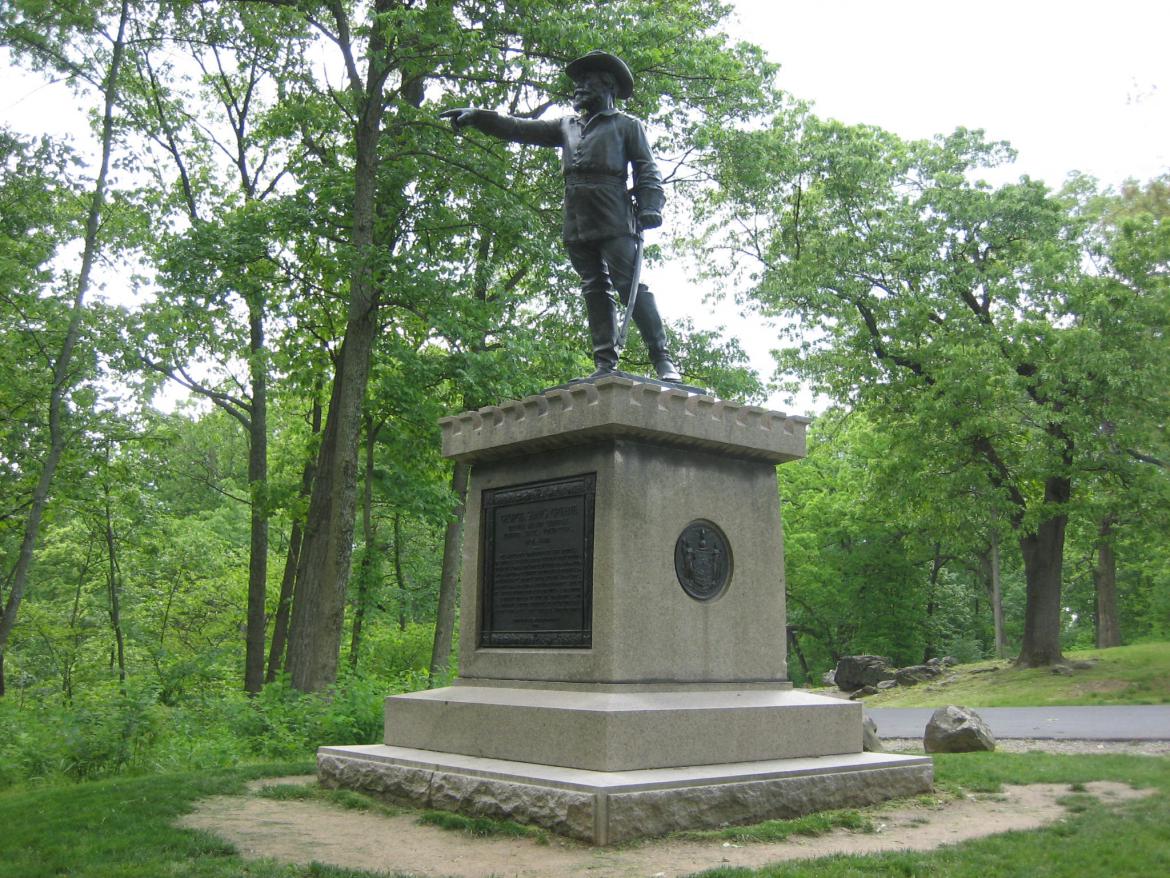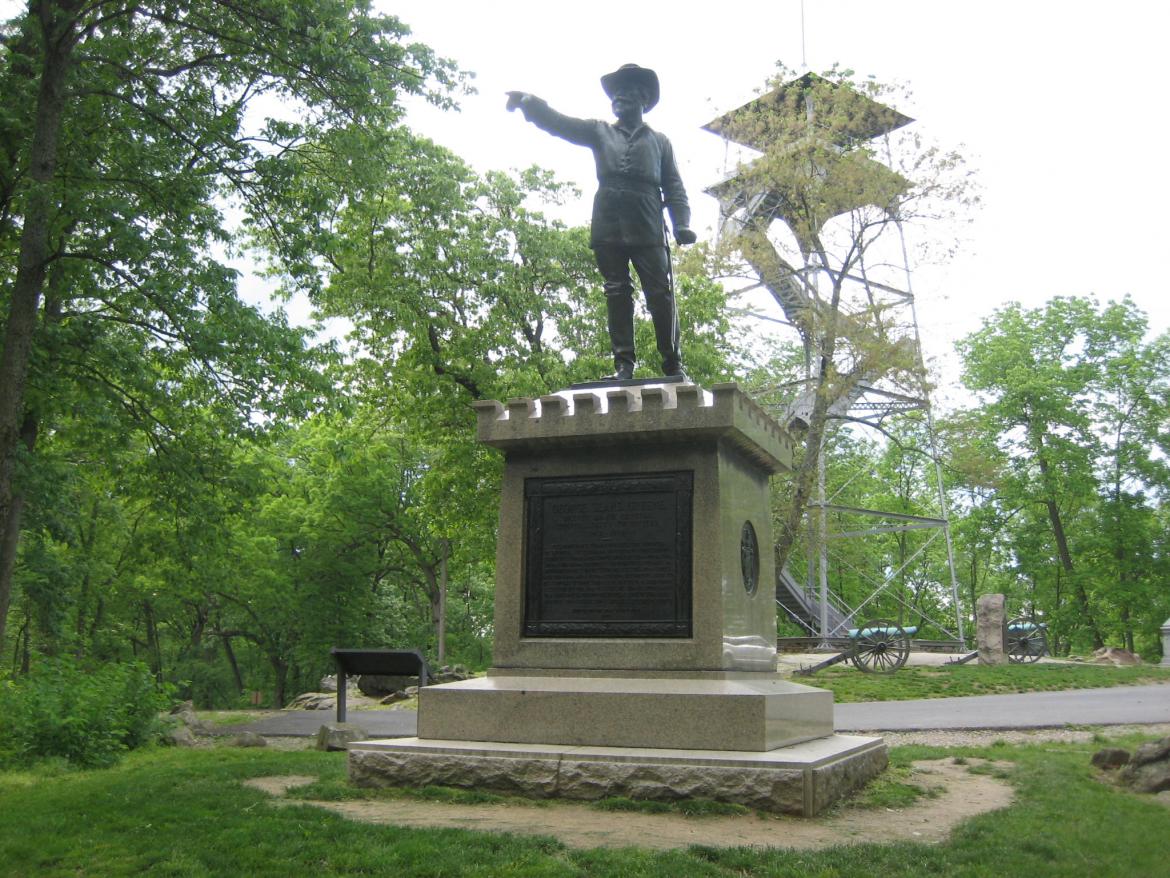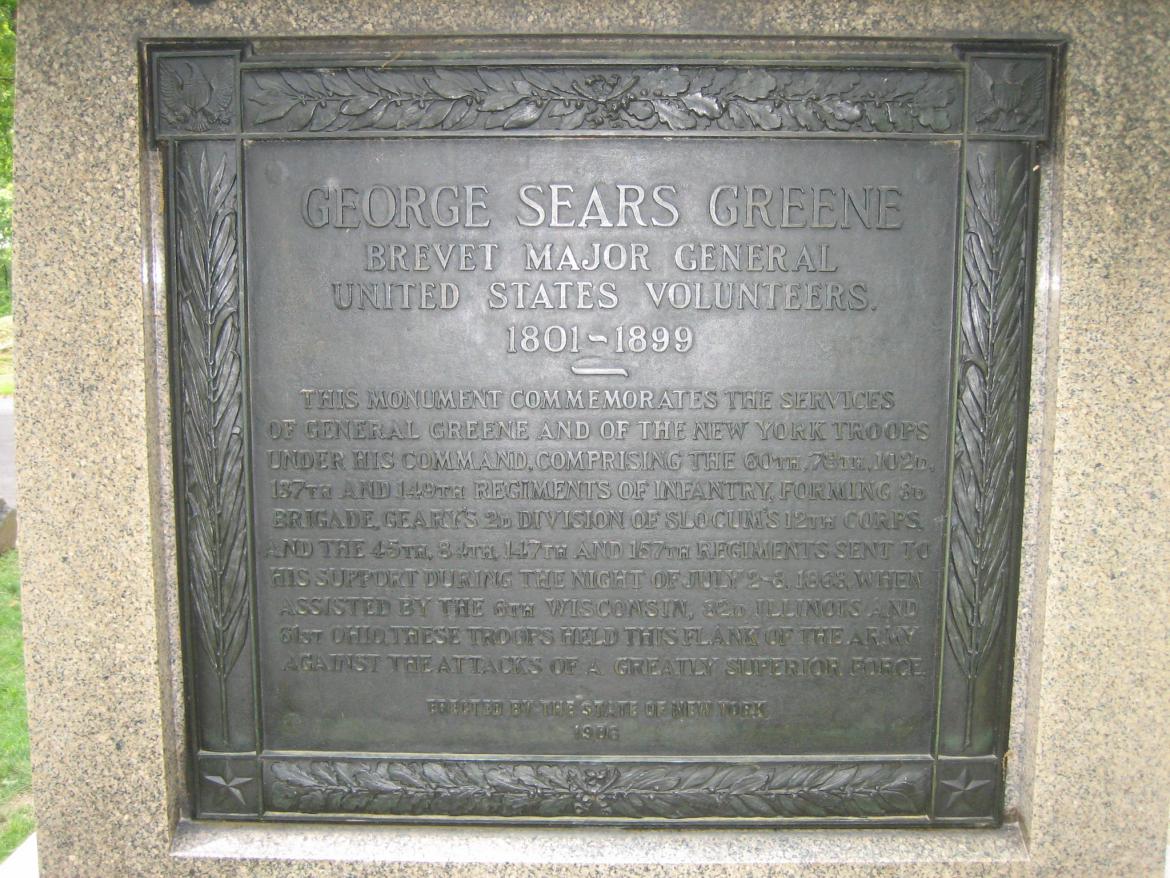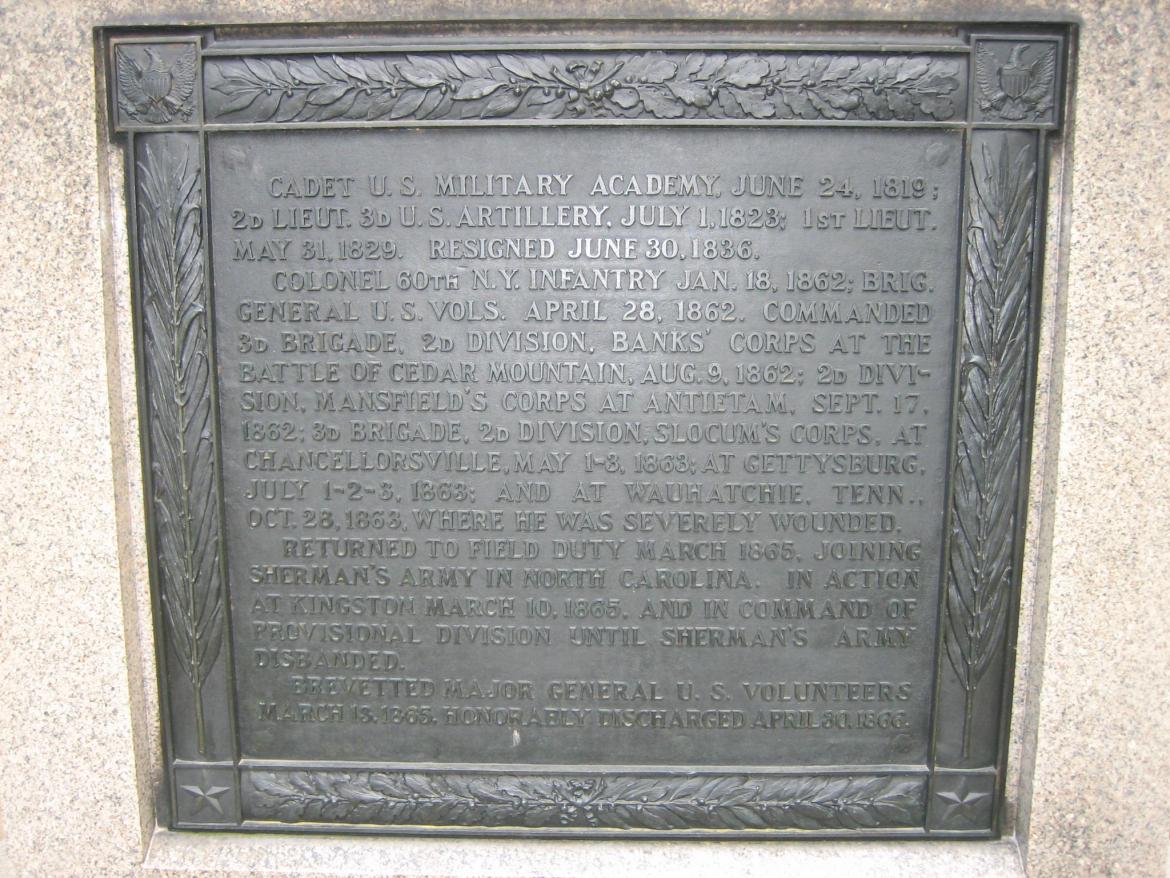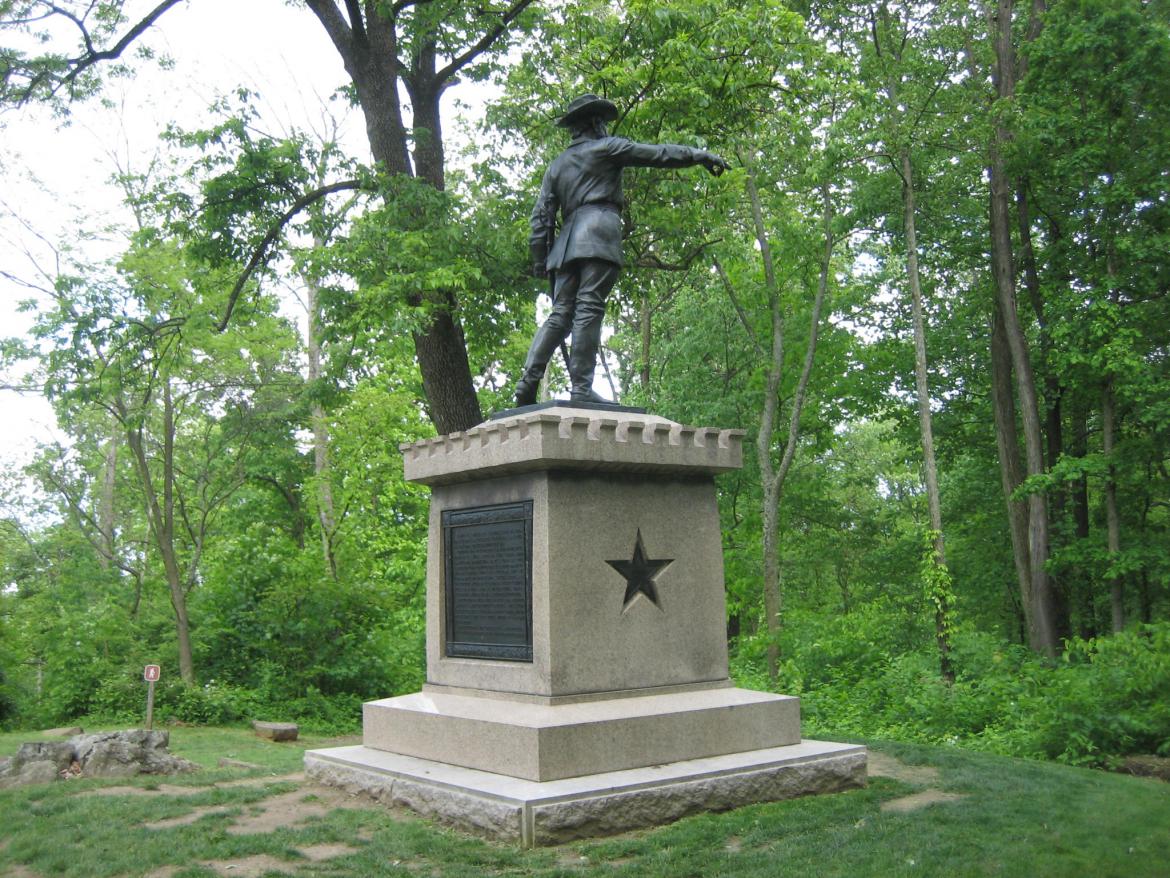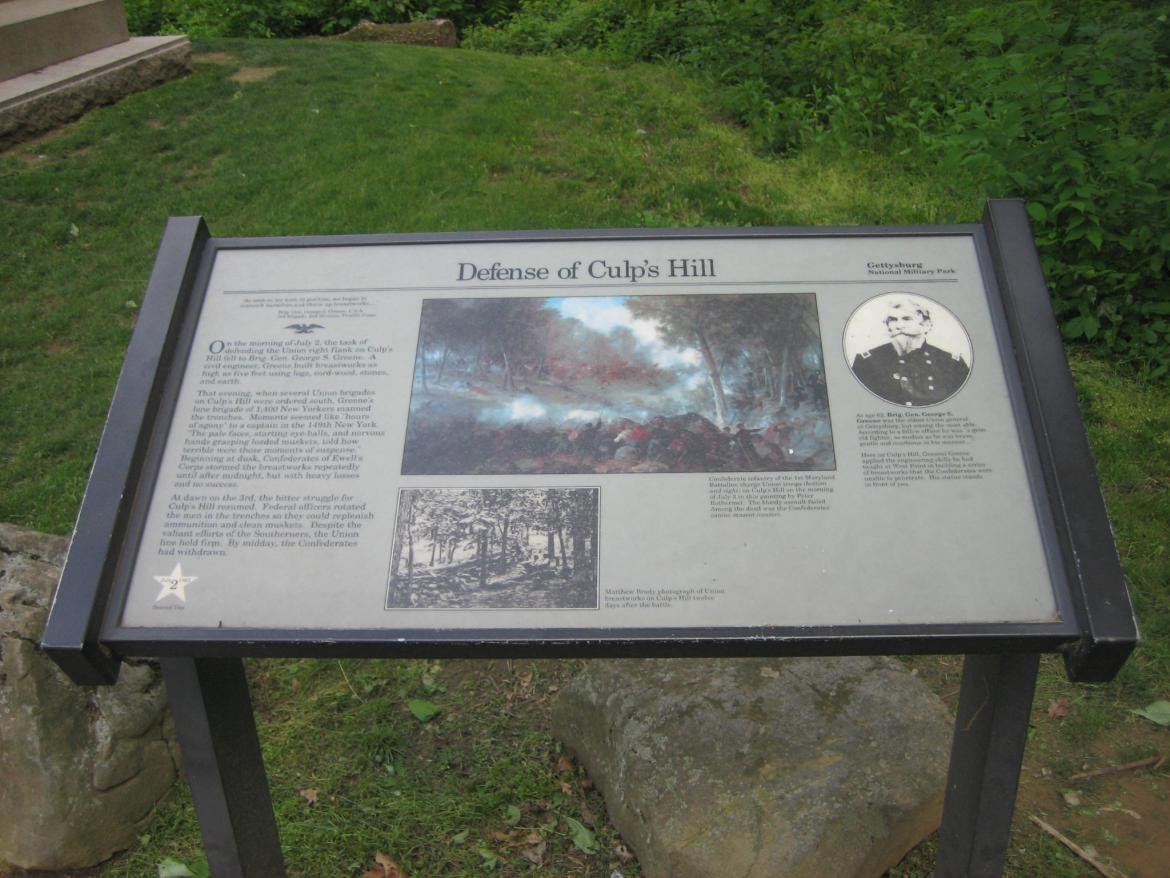George Sears Greene was born in Apponaug, Rhode Island on May 6, 1801. His second cousin was Nathaniel Greene, a United States hero during the American Revolution. Greene graduated second in the West Point Class of 1823. He did not chose the engineers as those who achieved his academic success were entitled. He chose the artillery instead, but remained at West Point to teach mathematics and engineering until 1827. One of his pupils was cadet Robert E. Lee of the class of 1829. This view was taken from the southeast facing northwest at approximately 4:45 PM on Monday, May 19, 2008.
George Sears Greene was a United States Brigadier-General at the Battle of Gettysburg. His greatest contribution to the battle, and to the Union cause was his defense of the Army of the Potomac’s right flank on Culp’s Hill the night of July 2, 1863 and the morning of July 3, 1863. The Gettysburg Daily chose Monday to visit his statue on Culp’s Hill, near the observation tower.
Greene married, and had three children. While stationed at Fort Sullivan in Maine in 1833, his wife and the three children died, probably from tuberculosis. Greene threw himself into studying law and medicine and resigned in 1836 to become a civil engineer. He built railroads in six states, and became a founder of the American Society Civil Engineers and Architects. Greene remarried, and had six children, including four sons that served in the Civil War. This view was taken from the south facing north at approximately 4:45 PM on Monday, May 19, 2008.
The plaque on the front (south) side of the monument. This view was taken from the south facing north at approximately 4:45 PM on Monday, May 19, 2008.
On January 18, 1862, the age of 61, Greene became Colonel of the 60th New York Infantry Regiment. He was appointed Brigadier-General three months later. At Gettysburg, his engineering skills enabled his men to build strong field fortifications, and hold off Confederate assaults, outnumbering his men three to one, while the rest of the 12th Corps was sent to reenforce other parts of the Union line. His men held until they were reenforced, and their actions protected the Baltimore Pike and Cemetery Hill from being captured by the Confederates. This view was taken from the west facing east at approximately 4:45 PM on Monday, May 19, 2008.
The plaque on the rear (north) side of the monument. This view was taken from the north facing south at approximately 4:45 PM on Monday, May 19, 2008.
Greene died on January 28, 1899, four months short of his 98th birthday. A two ton boulder was taken from Culp’s Hill to be placed over his grave at Warwick, Rhode Island, fulfilling a request that he had made. The statue, provided by the State of New York, was dedicated on September 26, 1907 at a cost of $6863. The statue looks down the slope, and points in the direction of a breakthrough on the right of his line the night of July 2nd, near the 137th New York monument. This view was taken from the northwest facing southeast at approximately 4:45 PM on Monday, May 19, 2008.
The wayside exhibit explaining Greene’s actions. This view was taken from the northwest facing southeast at approximately 4:45 PM on Monday, May 19, 2008.

